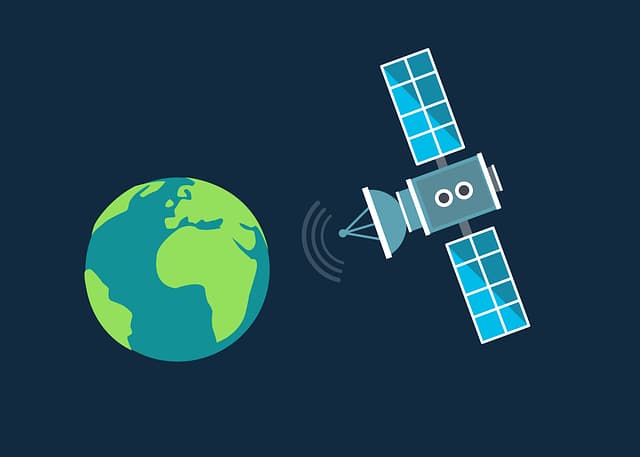At the end of 1945 the world saw a small scientific article, which was devoted to the theoretical possibilities of improving communication (primarily the distance between the receiver and the transmitter) by raising the antenna to the maximum height.
The author of the article “Extraterrestrial Repeaters” was the English scientist Arthur Clarke. This marked the beginning of the development of a new type of communication.
What was the principle of operation?
It was quite simple – the scientist proposed that a large repeater antenna, which would receive signals from a terrestrial source and transmit them further, should be placed in orbit around the Earth.
The main advantage was the huge coverage area, which could be controlled by just one satellite. This would have significantly increased the quality of the signal, removed the limit on the number of receiving stations and would not have required additional construction of terrestrial repeaters. The United States became interested in the project as part of a solution to the problems with transatlantic telephone communications.
The development of satellite communications systems began with the launch of the first Echo-1 (a passive repeater in the form of a metallized ball) into space in August 1960.
Later, key satellite communications standards (operating frequency bands) were developed, which are widely used all over the world.
Satellite communications applications
Since its successful implementation, the quality of satellite communications has increased significantly.
Thanks to the introduction of mobile ground stations the subscriber could receive the radio signal irrespective of the satellite location at any time of the day, automatically switching from one coverage area to another and connecting to the nearest repeater in automatic mode.
The use of satellite communications can be divided into several conditional areas:
Backbone communication. Initially there was a task to transfer a big volume of information (voice messages in particular), but with time, with the transition to digital format, such need disappeared and today from this area satellite communications replace fiber-optic networks;
VSAT. The so-called “small” systems with an antenna diameter of up to 2.4 meters. The technology is successfully developing, and serves to create private communication channels;
mobile communications (the basis of telephony and television broadcasting);
Internet access.









